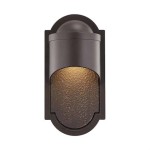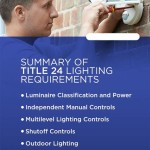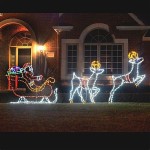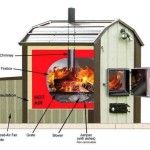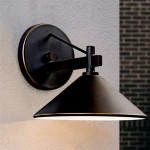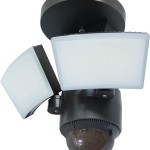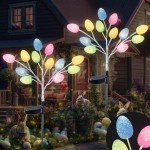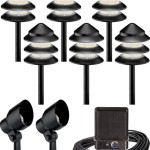Outdoor Flood Light Bulb Sizes
Outdoor flood lights play a crucial role in security and landscape lighting, illuminating large areas for safety and aesthetics. Choosing the right bulb size is essential for achieving the desired lighting effect while considering energy efficiency and fixture compatibility. This article explores the various bulb sizes available for outdoor flood lights, their applications, and factors influencing size selection.
Understanding bulb size in flood lights primarily involves the physical dimensions of the bulb itself, which impacts compatibility with the fixture. While wattage used to be the primary indicator of brightness, modern lighting technology now relies on lumens. Therefore, while understanding physical size is crucial for proper fit, lumens should be the primary consideration for brightness requirements.
One common size is the PAR (Parabolic Aluminized Reflector) series. PAR bulbs are known for their focused beam, making them suitable for highlighting specific landscape features or providing directional security lighting. Common PAR sizes for flood lights include PAR38, PAR36, and PAR20. The number following "PAR" denotes the diameter of the bulb in eighths of an inch. For example, a PAR38 bulb has a diameter of 4.75 inches (38/8). These bulbs are available in various beam angles, allowing for adjustments in light spread.
Another prevalent bulb type is the BR (Bulged Reflector) series. BR bulbs offer a wider beam angle compared to PAR bulbs, making them suitable for general floodlighting applications. Common BR sizes include BR40 and BR30. Similar to PAR bulbs, the number designates the diameter in eighths of an inch. BR bulbs are frequently used in recessed can fixtures and offer a good balance between light intensity and coverage.
MR (Multifaceted Reflector) bulbs are smaller than PAR and BR bulbs and are typically used for accent lighting or in smaller flood light fixtures. MR16 bulbs, for instance, are commonly used in landscape lighting to highlight specific plants or architectural elements. These bulbs provide a focused beam and are known for their compact size. MR11 bulbs are even smaller and are often used for spot lighting.
Beyond the traditional bulb shapes, integrated LED flood lights are becoming increasingly popular. These fixtures have the LED light source built-in, eliminating the need for replaceable bulbs. They come in various sizes and shapes, offering a wide range of lumen outputs and beam angles. Integrated LEDs often offer significant energy savings compared to traditional halogen or incandescent bulbs and boast a much longer lifespan.
Choosing the appropriate bulb size requires considering several factors. Firstly, the fixture itself will dictate the compatible bulb size. Check the manufacturer's specifications to determine the correct bulb type and size. Secondly, the desired lighting effect plays a significant role. A wider beam angle is suitable for general illumination, while a narrower beam angle is better for spotlighting. Thirdly, consider the distance between the fixture and the area to be illuminated. Greater distances may necessitate higher lumen output or a larger bulb size to achieve adequate brightness.
The lumen output of the bulb determines the brightness of the light. Higher lumens indicate a brighter light. When replacing existing bulbs, note the current lumen output and choose a replacement with a similar or higher value if greater brightness is desired. Lumen output is now the primary metric for comparing bulb brightness, superseding wattage as the key indicator.
Energy efficiency is another crucial factor. LED bulbs are generally more energy-efficient than halogen or incandescent bulbs, offering substantial long-term cost savings. Consider the overall operating cost and the environmental impact when selecting a bulb type.
Finally, color temperature influences the appearance of the light. Color temperature is measured in Kelvin (K). Lower color temperatures (2700K-3000K) produce a warm, yellowish light, while higher color temperatures (5000K-6500K) produce a cooler, bluish-white light. Consider the desired ambiance and the application when selecting the color temperature.
In summary, choosing the appropriate outdoor flood light bulb size involves understanding the various bulb types, their dimensions, and the factors that influence their performance. Considering these factors will ensure effective and efficient illumination for security and aesthetic purposes.

Light Bulb Shape Guide Par 1000bulbs Blog

Light Bulb Identifier And Finder Guide Ideas Advice Lamps Plus

Light Bulb Shape Guide Br R Shapes 1000bulbs Blog

Light Bulb Shape Guide Br R Shapes 1000bulbs Blog

A Guide To Light Bulb Sizes Types Shapes And Codes

Standard Bulb Vs Par Flood Light The Nitpicky Artist

What Types Of Light Bulbs Are Used In Outdoor Flood Lights Ledwatcher

Diffe Light Bulb Sizes Shapes And Codes Size Chart Electronicshub

Lights Visual Guide

Ge Led Motion 90 Watt Eq Par38 Warm White Medium Base E 26 Light Bulb In The Spot Flood Bulbs Department At Com
Related Posts
